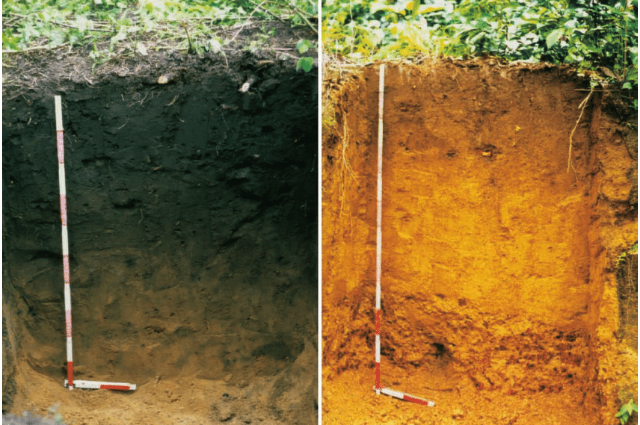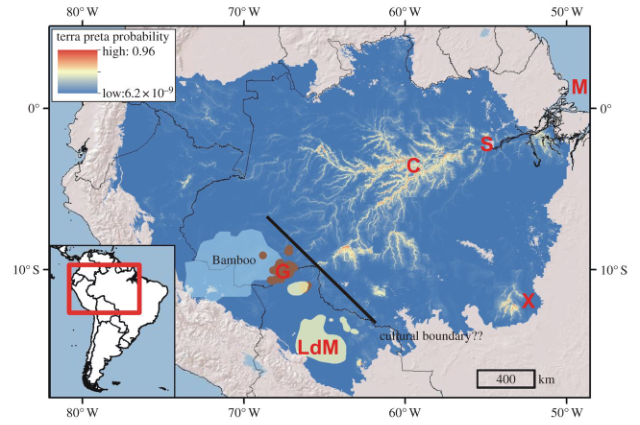
Introduction
The Amazonian Basin in South America encompassing major areas in Brazil, Ecuador and Peru is agriculturally one of the most nutrient-improvised environments on earth. As ecologically rich rainforests are perceived to be from an environmental standpoint, the incessant rains cause severe agricultural impairments. The soils of these regions belong to the Order Oxisols, which are deeply-weathered soils form particularly in humid tropics like the Amazonian Rainforests. These soils are leached out of all plant-available nutrients which is attributed to perpetual rainfall experienced, thus rendering the entire area unfit for all types of cultivations. So how did the prehistoric tribes that dwelled here managed to carry out farming? It turns out that these are several irregular, mysterious pockets, clocking to an aggregate area of about three thousand hectares, of a type of soil called Terra Preta, which makes the region suitable for farming, thus forming patches of out-of-place fertility in an otherwise harsh environment.
A Tint of Ancient Mystery
“Terra Preta de Indio” (Amazonian Dark Earth) is the local name for this peculiar type of soil found in the Amazon Basin. Scientific research conducted through the years has found that the soil has the ability to invariably maintain its nutrient status through hundreds of years without any soil management techniques. As a thumb rule, these soils have three time more plant-available phosphorous and up to nine time more nitrogen than the surrounding soil. Now, according to soil chemistry, it is theoretically impossible since all natural soils have a specific limit up to which it can act as a nutrient reservoir. Terra Preta is not associated with any known parental soil types and does not fit with the existing environmental conditions prevalent in that area for a millennium.

Survey expeditions have found that the areas of such soils stretch for approximately 2 acres at a time and extends only up to a depth of 25 inches. Cumulatively, all the patches add up to roughly 10 % of area of the Amazon Basin. During the 1960s and 1970s, scientists extensively researched the physical and chemical parameters of the soil and the results strongly supported its possible anthropogenic origins. Its strategic location near river banks and natural ports further reinforced this notion. Some scholars have credited its creation to pre-Columbian Indians between 500 BC and 1500 AD, who abandoned it after invasion by European settlers.
Why it baffles the mainstream scientific community?
Ever since mankind has forecasted the future implications of global warming and climate change, two leading thoughts have achieved the status of forerunners of the world’s consciousness in this regard. One is to make immediate amendments to buffer the deteriorating conditions on earth to buy time for restorative measures. The second is the idea of “terraforming” other planets, possibly Mars, thus artificially creating an environment suitable for inhabitation. Since all evidences strongly suggest towards the anthropogenic origins of Terra Preta, questions arises whether it was an organized ancient project clearly targeted towards terraforming an inhabitable landscape. Whether it was an unintentional by-product of habitation or habitation was a by-product of a planned act of terraforming is vague in terms of credibility till date.

Researchers speculates the use of special terraforming bacteria and fungi, traces of which have never been found. Furthermore, a huge amount of bio-char (partially combusted dry organic matter), has been found in the soil, suggesting use of advance knowledge in organic pyrolysis. The use of bio-char as a soil conditioning agent is a recent technology and its agronomic qualities still fall short of the superiority of Terra Preta. A question arises, how did the primitive Amazonian tribes know about such technology? Although bold claims about a successful reproduction of Terra Preta using bio-char and a concoction of microorganisms is abounding, all of them have been confirmed to be unwarranted and unsubstantiated. All these questions paint a deeply unsatisfactory picture about the origins of Terra Preta, where even the best scientific minds fail to tie up the loose ends successfully.
Final thoughts
Although mainstream science may seem to possess a vast array of knowledge, it still falls short of intellectual faculties for many out of place occurrences like Terra Preta. The implications of the missing pieces about our understanding of Terra Preta stares at us like a bottomless abyss while questioning ample mainstream assumptions in archaeology, history and science. Often, occurrences are forced to fit the generally accepted notions and the parts that stick out are rejected as errors. The fragile glass ceiling of mankind’s intellectual levels perhaps acts as a form of self-imposed limits to entertain radical evaluations of topics we have little knowledge of. Perhaps only when we learn to look at things as it is, not how it should be, the mystery of Terra Preta hidden deep inside the rain-drenched forests of Amazon Basin would reveal itself.
